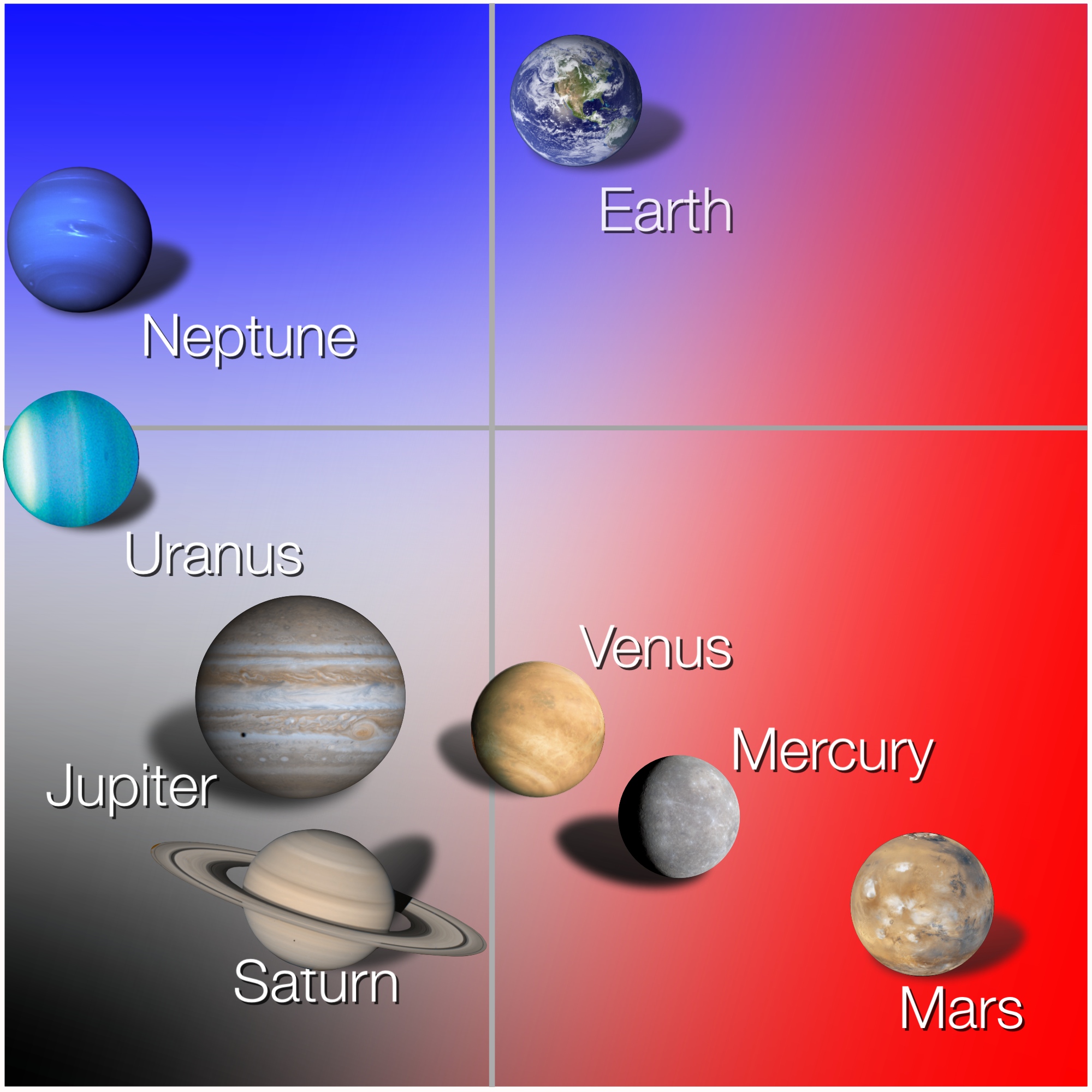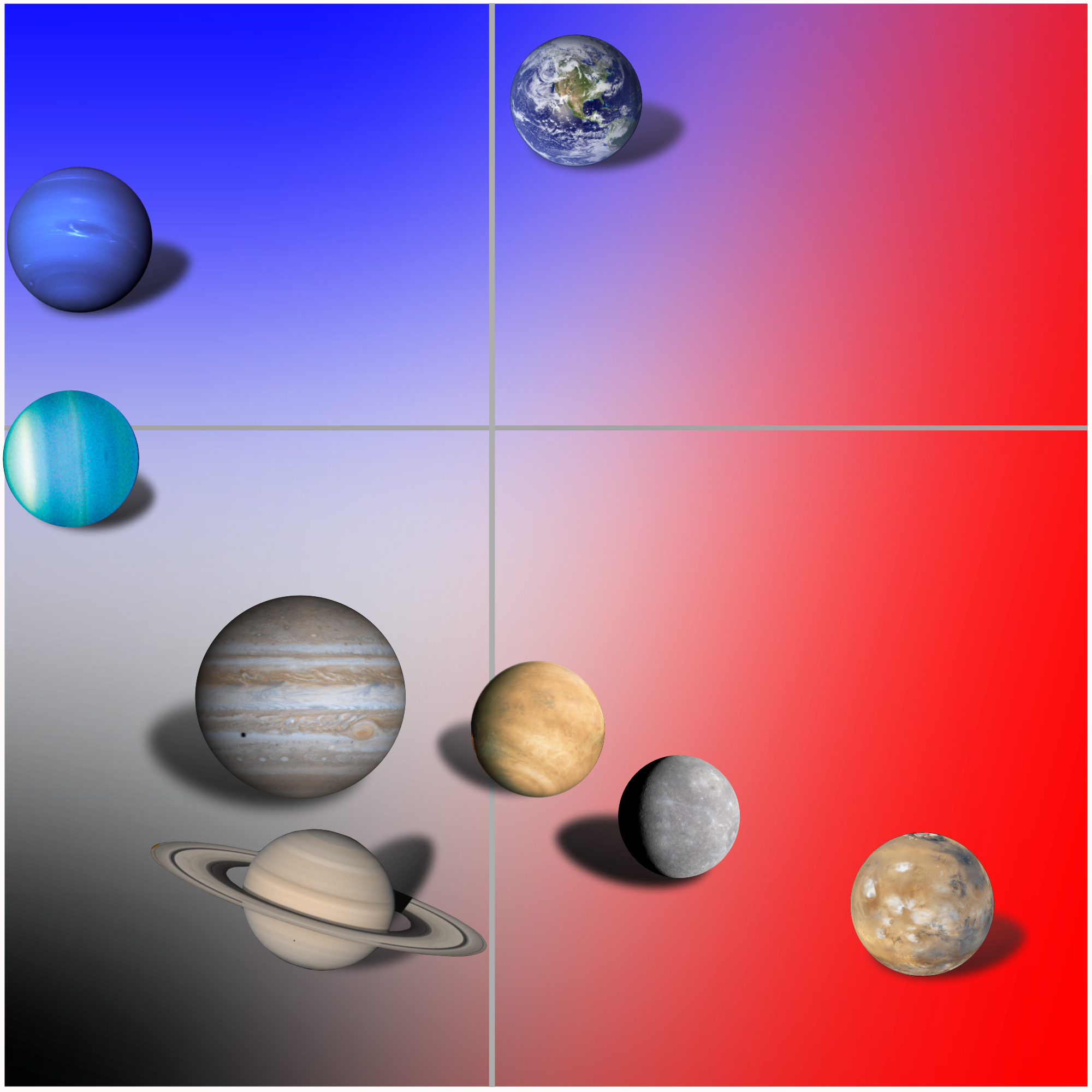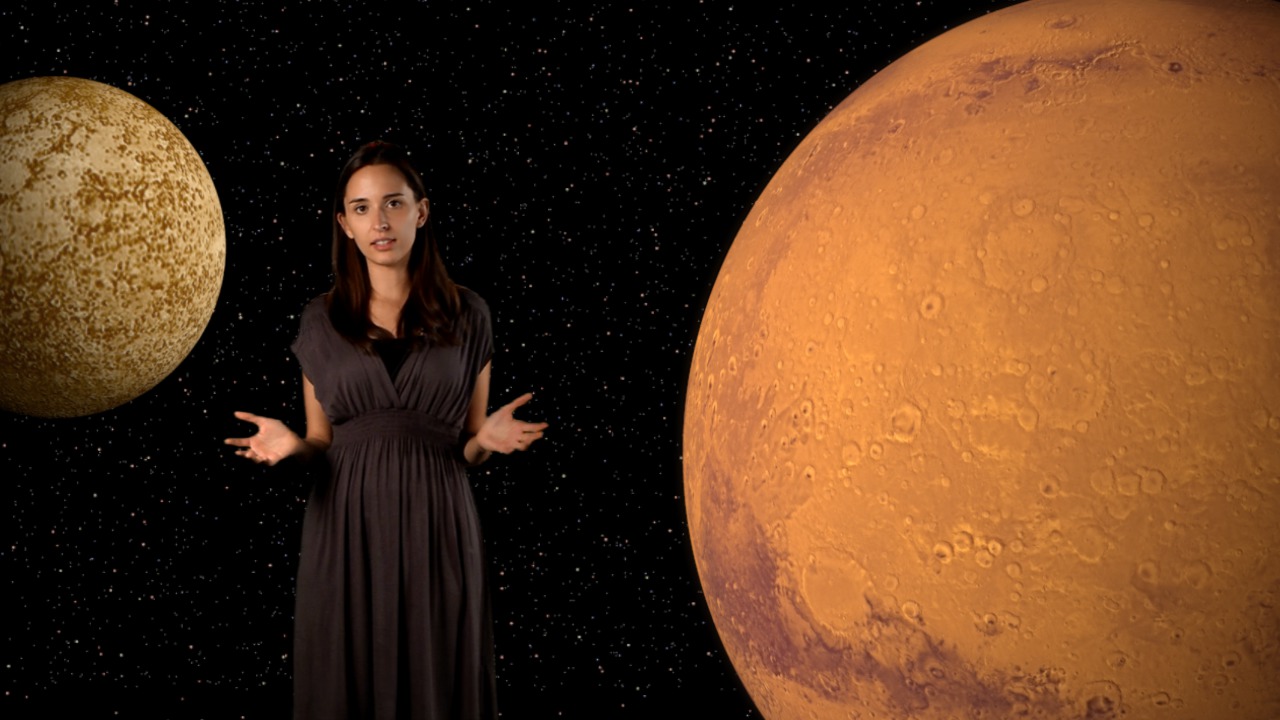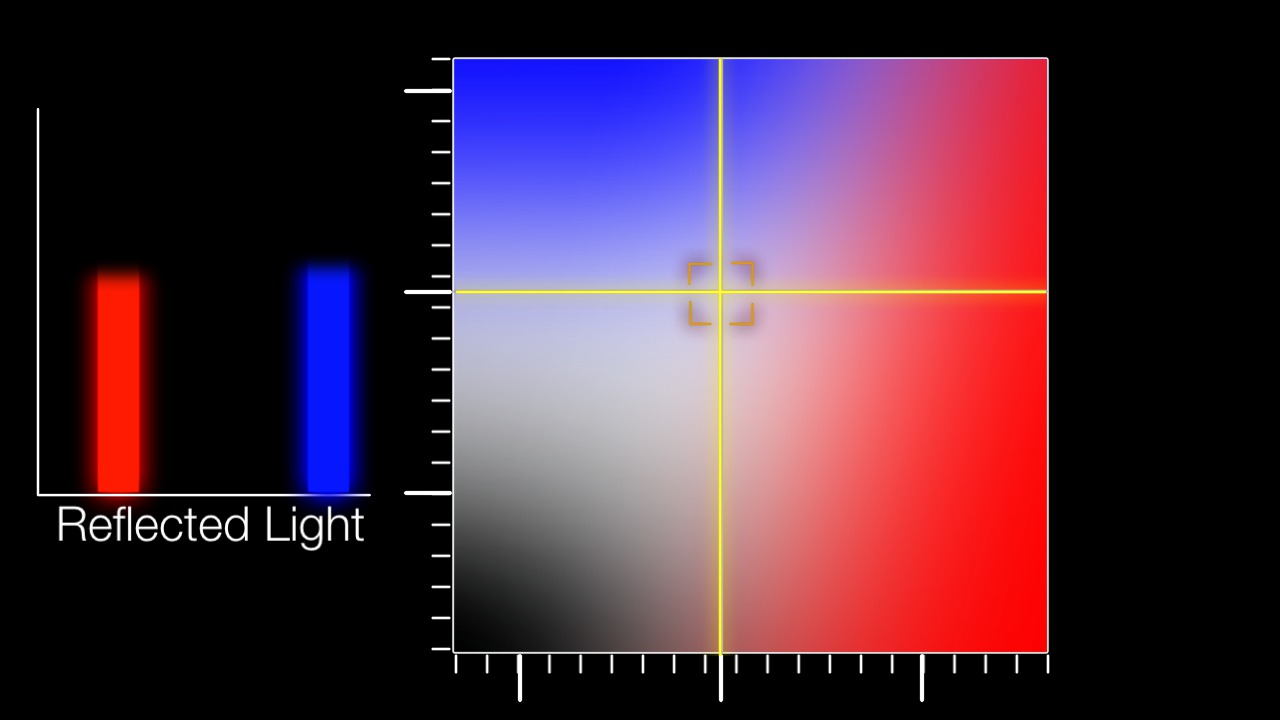Planets and Moons
Universe
ID: 10679
NASA astronomer Lucy McFadden and UCLA graduate Carolyn Crow recently made a discovery that will help identify characteristics of extrasolar planets, such as the compositions of their surfaces and atmospheres. By comparing the reflected red, blue, and green light from planets in our solar system, a team led by Crow and McFadden was able to group the planets according to their similarities. As it turns out, the planets fall into very distinct regions on this plot, where the vertical direction indicates the relative amount of blue light, and the horizontal direction the relative amount of red light.





Using Color to Search for Alien Earths
This technique works even when the source of the reflected light is visible only as a point, like exoplanets appear when observed through a telescope. Therefore, scientists can use it to identify earthlike planets more easily.





Related
For More Information
Credits
Scott Wiessinger (UMBC): Animator
Chris Smith (UMBC): Animator
Dan Maas (Maas Digital): Animator
Scott Wiessinger (UMBC): Video Editor
Scott Wiessinger (UMBC): Producer
Carolyn Crow (UMD): Scientist
Lucy McFadden (UMD): Scientist
Rob Andreoli (Advocates in Manpower Management, Inc.): Videographer
Daniel Pendick (SP Systems): Writer
Francis Reddy (University of Maryland College Park): Lead Science Writer
Francis Reddy (University of Maryland College Park): Graphics
Chris Smith (UMBC): Animator
Dan Maas (Maas Digital): Animator
Scott Wiessinger (UMBC): Video Editor
Scott Wiessinger (UMBC): Producer
Carolyn Crow (UMD): Scientist
Lucy McFadden (UMD): Scientist
Rob Andreoli (Advocates in Manpower Management, Inc.): Videographer
Daniel Pendick (SP Systems): Writer
Francis Reddy (University of Maryland College Park): Lead Science Writer
Francis Reddy (University of Maryland College Park): Graphics
Please give credit for this item to:
NASA/Goddard Space Flight Center
NASA/Goddard Space Flight Center
Short URL to share this page:
https://svs.gsfc.nasa.gov/10679
This item is part of this series:
Narrated Movies
Goddard TV Tape:
G2010-100 -- Planet Color
Keywords:
SVS >> Comet
SVS >> Earth
SVS >> HDTV
SVS >> Jupiter
SVS >> Mars
DLESE >> Space science
SVS >> Venus
SVS >> Astrophysics
SVS >> Planets
DLESE >> Narrated
NASA Science >> Planets and Moons
NASA Science >> Universe
SVS >> Exoplanet
https://svs.gsfc.nasa.gov/10679
This item is part of this series:
Narrated Movies
Goddard TV Tape:
G2010-100 -- Planet Color
Keywords:
SVS >> Comet
SVS >> Earth
SVS >> HDTV
SVS >> Jupiter
SVS >> Mars
DLESE >> Space science
SVS >> Venus
SVS >> Astrophysics
SVS >> Planets
DLESE >> Narrated
NASA Science >> Planets and Moons
NASA Science >> Universe
SVS >> Exoplanet












